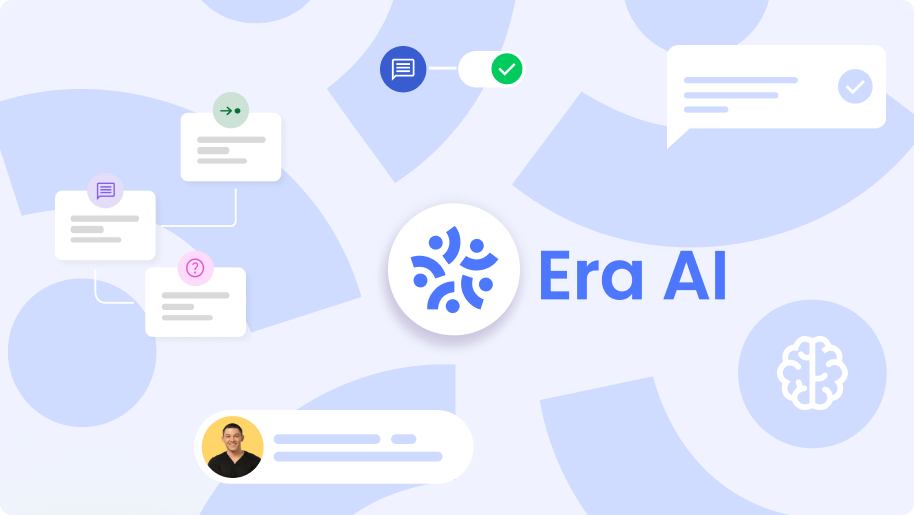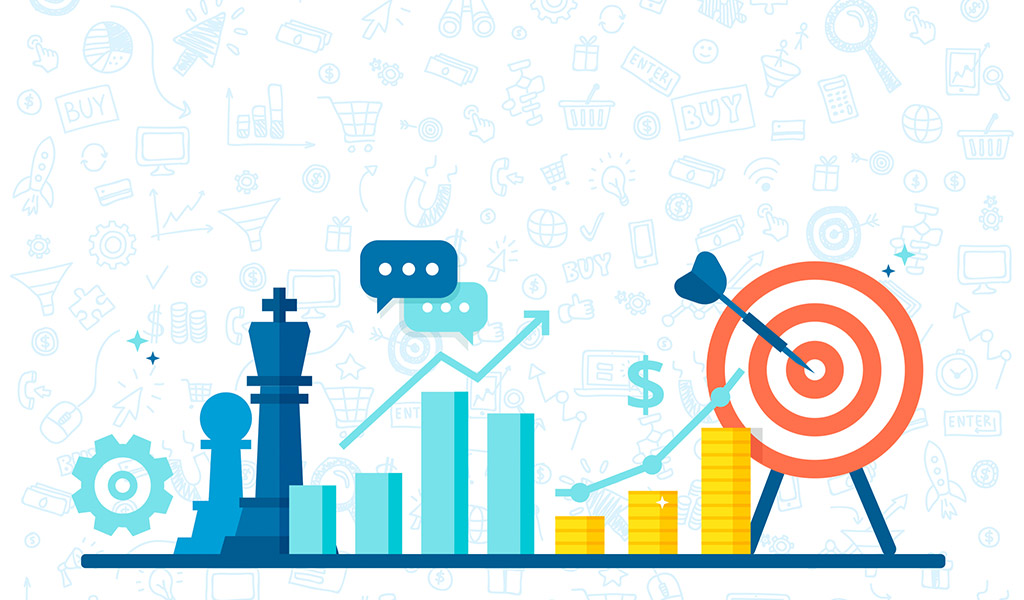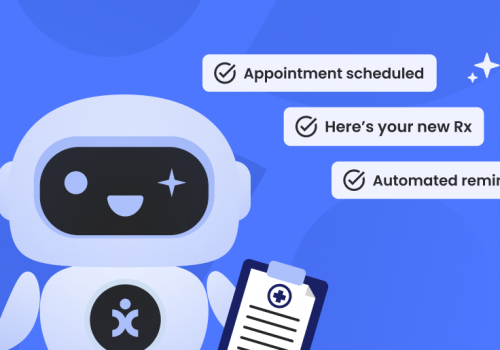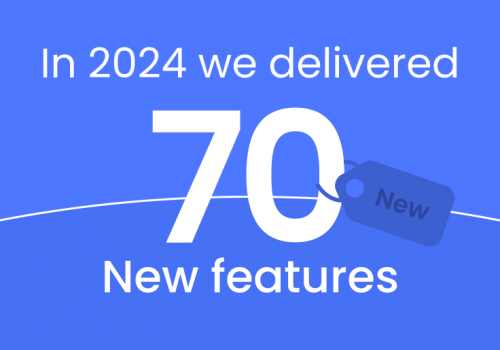Marketing Automation. Automation is booming right now. You will struggle to find an industry, a major organization, or even a department within such an organization that isn’t using automation. Even smaller companies are now adopting automation solutions as a way to get ahead of the competition, reduce costs, and increase efficiency. Automation is now more affordable and more accessible than ever before and so we’re seeing it everywhere.
Today we’re going to be focusing on marketing automation specifically and how it relates to customer service. Marketing budgets are often ginormous, averaging around 11% of revenue, and the marketing department is a fundamental part of any business. Companies in the United States spend more money on marketing than companies in other countries. The retail industry spends more on advertising than any other industry. With such hefty budgets assigned to marketing and advertising, there’s a lot of responsibility to get things right. There’s always room to improve efficiency and get an even better return on investment (ROI). This is what automation in marketing is all about.
What is Marketing Automation?
On average, 51% of companies are using marketing automation and almost 60% of B2B companies are planning to implement marketing automation. So, it’s clearly popular, but what is it? Put simply, marketing automation is the process of using dedicated software to automate the marketing activities within a company. When it comes to automation, it’s usually the repetitive tasks that are automated first. In 2020, repetitive tasks are a waste of human time and potential. Every minute an employee spends doing a repetitive task is a minute that could be used to explore more creative or brain-intensive tasks for the company. Additionally, the software is just better at it. Would you rather hire an employee who can do repetitive tasks quickly and without errors, or one who occasionally makes mistakes and sometimes gets tired and slows down? You’d pick the first option. Well, this hypothetical employee is actually a piece of automation software.
There are several types of marketing automation software. These are marketing intelligence, marketing automation, and advanced workflow automation.
Marketing Intelligence
Marketing intelligence is focused on the automated gathering of information (intelligence) concerned with customer behavior. For example, tracking codes can be used in social media, email, and webpages. This intelligence can be important for the sales team in terms of lead generation. It’s also useful to the wider marketing team because it can help inform future marketing approaches and decisions. Understand who exactly is engaged with your content means you can create content that resonates with these people. There are always patterns to be found.
Marketing Automation
This is all about the sales funnel and how new leads can be nurtured as they move through the funnel. Potential leads are scored based on their actions and engagement with the content they see. As they move through the sales funnel, more personalization can be added to encourage the prospect to be more engaged and move to the next part of the funnel.
Advanced Workflow Automation
This is the automation of internal business processes associated with the marketing department or the marketing effort. For example, automating processes connected to planning and budgeting, approvals, collaboration, digital content, the marketing calendar, and more.
How Does Marketing Automation Relate to Customer Service?
At a high level, marketing automation is actually a segment of customer relationship management (CRM), which is a part of customer service. You can’t separate customer service from CRM, and you can’t separate CRM from marketing. They are all tightly connected because they explain and inform how the business will interact with customers.

How Marketing Automation Improves Customer Service
Marketing automation improves customer service by delivering more personalized content to consumers. Personalized content or personalized experiences help attract the right consumers and help convert them into customers. A well designed automated marketing approach will deliver personalized content at the right time in the sales funnel.
If a customer has engaged with content (a web page, ad, or blog) on product A, and clicked away from the content on product B, then you know that they are interested in product A. Sending them emails with information or offers on product B is likely a waste of time. Some prospects might see a side of product B they had never seen before and be convinced to buy it, but most won’t. There’s likely a concrete reason why the person isn’t interested in product B. Maybe they already have a similar product at home. Maybe they have no use for it in their life because it doesn’t solve any problems for them. Maybe they’ve tried a similar product in the past and had a bad experience.
By contrast, the person who interacted with product A is already interested, all you have to do is keep them interested until they want to buy. Maybe they are tempted to buy but aren’t 100% sure that this product will solve their problems because they need a specific feature. A cursory browse of your website or interaction with a tweet doesn’t tell this customer whether your product has this feature. If a customer is hesitating, it could be because the price isn’t right for them, or because they aren’t sure the product isn’t right for them. This is what personalized content is designed to address. You can use emails, chatbots, blogs, and so on, to give the customer more information on product A or discounts on product A. If these were the issues the customer had with product A, then this move will encourage them to the next point in the sales funnel and they become a buyer.
This helps customer service because you ensure that you are finding the right buyers. You are connecting interested parties with a product that will help them. This means this customer is much more likely to be satisfied with the product. They are less likely to contact the customer service team, and when they do, they are less likely to be extremely angry.
Automated Marketing Content is Less Annoying
Automated marketing content is less annoying… when it is done right. Simply having a script that fires off marketing emails to people indiscriminately will annoy people. However, personalized content is much less annoying to people. If you send everyone the same emails, then you’re on a fast track to the spam folder. These people will now never see your content. Put simply, you had a window to convert them, and as soon as you’re in the spam folder, that window has closed. The customer had to take action to put your emails in the spam folder. They likely did this because they felt the emails were irrelevant, too frequent, or other reasons. Once someone takes this action, they don’t undo it. They also are likely to remember that they felt they had to take this action because your company was so annoying! There’s no coming back from this.
Amazon is great at sending personalized emails to customers. When you get an email from Amazon, you can be sure that the products you see will be products you have interacted with in the past or products connected to something you have interacted with in the past.
Less Focus on Sales Calls
Sales calls can often be perceived as aggressive by consumers. I’m sure we can all relate to a time that we gave our contact details to a company simply wanting to get more information about a product. For most people who do this, they simply want an email with more information or access to other exclusive content or deals. They aren’t yet ready for a sales call. People get annoyed very quickly if they get spammed with calls from a cheery sales rep trying to encourage them to buy a product. If these calls persist, the more annoyed the customer gets. However, if the call is placed at the right time in the sales funnel, it is much more likely to be successful. Automated marketing and workflows can trigger the sales team to act only when the moment is right.
The sales reps can get a list of leads who have made it through to the point of “call this person” on the sales funnel.
Effective Internal Communication
Even with personalized marketing and targeting the right customers, you can’t guarantee that customers will be happy 100% of the time. It’s not time to get rid of your customer service team just yet! When a customer does inevitably call and say “this product isn’t solving my problems in the way I thought it would” or “your product isn’t working”, then the company must respond quickly and effectively. This means finding the right information quickly and delivering it to the customer in a way they can understand.
Having an automated marketing solution helps break down the silos between teams and creates a structure whereby internal staff can communicate with each other when they need help. It means that customers aren’t left on hold getting more and more frustrated. It means that problems are solved swiftly before the customer has the chance to consider getting a refund or pursuing other negative actions.

How to Get Started
1. Decide What You Want to Automate
If you have little to no automation within the marketing department, then you should start by identifying all of the repetitive tasks within the operation. You can break these tasks down further into tasks that directly impact customers and ones that are internal business processes. Repetitive tasks are the easiest tasks to automate, and they are also the area where you can save the most time and costs. If you’re looking for a quick win, then this is the answer.
2. Make a Plan for Marketing Intelligence
It’s 2020 and most companies are using some form of marketing intelligence. Collecting data is getting easier than ever before, and the same is true for data analysis. How clean is your data collection and analysis approach? Are you getting a good ROI? How can you use this intelligence to automate your marketing further? To get the most out of marketing automation, you need to have a robust marketing intelligence approach so this should be a key focus.
3. Decide on What You Need from Your Automation Software
Now you know what you want to achieve with marketing automation, it’s time to look around. Pay attention to the details of the software you’re looking at and ask how many problems this software can solve for you. Does it simply automate repetitive tasks, or does it take automation to the next level? Automation is rapidly advancing so ideally you want to pick a solution that focuses on more advanced or groundbreaking aspects of automation. If you pick a forward-thinking proactive company, then your automation will advance as the company advances.




















